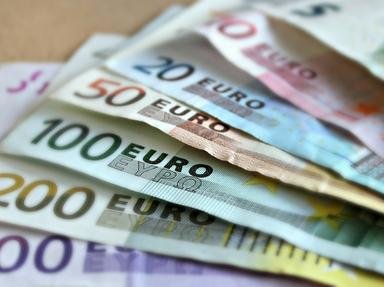Quiz Answer Key and Fun Facts
1. The 1 euro cent coin is the smallest euro coin in value. Which of these is NOT true about it?
2. The 2 euro cent coin is easily distinguishable from the 1 and 5 euro cent coins from looking at the edge. This is to help blind people. How is the edge of 2 euro cent coin different from the 1 and 5 euro cent coins, other than in size?
3. Which of these is true about the 5 euro cent coin?
4. Which of these is true about the 10 euro cent coin, but not about lower denominations?
5. The 20 euro cent coin is similar to the 2 euro cent coin in that it has a different edge design from the 10 and 50 euro cent coins. The 20 euro cent coin has 7 grooves on its edge, evenly spaced around the coin. Which coin used this design first?
6. What precise words are displayed on the euro coin that comes between the 20 euro cent coin and the 1 euro coin? Be careful!
7. Which of these is true about the bimetallic 1 euro coin?
8. The 2 euro coin is the highest-valued euro coin. It is also the only circulating euro coin to have edge writing on it. What does the edge lettering say?
9. The 5 euro banknote is the smallest-valued banknote. However, it still has security features. Which of these actions will show security features?
10. Each euro banknote is a different colour. The 5 euro banknote is grey. What colour is the 10 euro banknote?
11. When comparing a 20 euro banknote to a 5 or 10 euro banknote, what will you notice about the 20 euro banknote, other than the fact that it is blue?
12. Which of these is true about the 50 euro banknote?
13. All euro banknotes have architecture on them, with higher denominations showing more modern architecture. For example, the 100 euro banknote shows 17th-18th century architecture. For all banknotes, one side shows a building or part of a building, usually a gateway. What does the other side show?
14. Which of these is true about the yellow 200 euro banknote?
15. The 500 euro banknote is the highest-valued euro banknote. It is much more valuable than most highest-valued banknotes of other currencies. However, one currency that it replaced had a banknote with similar value. Which similarly-valued banknote did it replace?
Source: Author
hotdogPi
This quiz was reviewed by FunTrivia editor
trident before going online.
Any errors found in FunTrivia content are routinely corrected through our feedback system.
